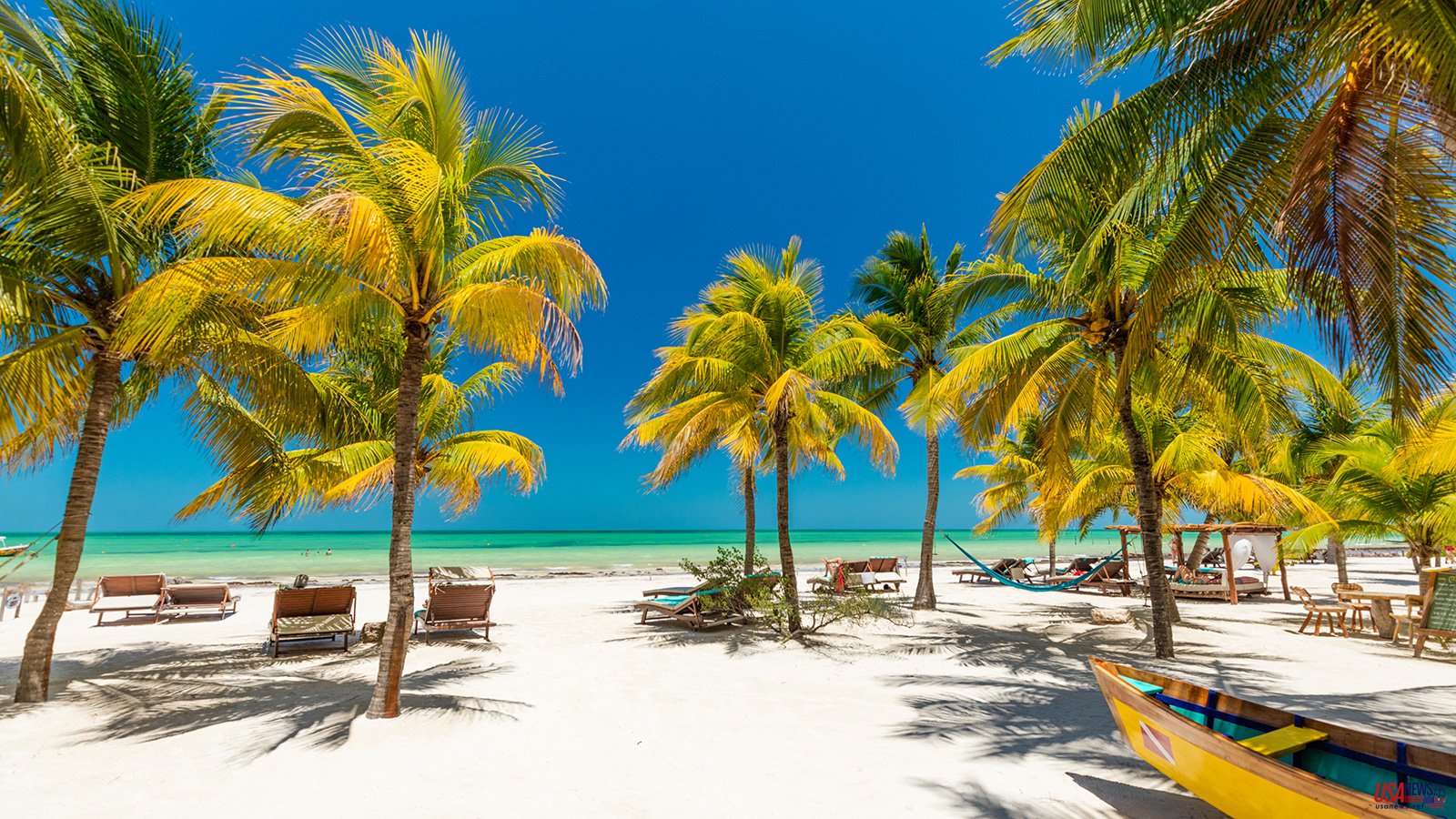Monday's announcement by the US Centers for Disease Control and Prevention saw three new destinations placed in Covid-19's "high" risk category. One of these was a North American travel giant.
The CDC updated its rating system to assess Covid-19 risk in April.
Level 3 is considered the highest level of risk. Level 2 is considered moderate risk. Level 1 is considered "low" risk.
The highest level of risk, previously Level 4, is now reserved for exceptional circumstances such as high case counts, the emergence of a new variant or the collapse of an existing health care infrastructure. No destinations have been assigned to Level 4 under the new system.
The country that has had more than 100 cases per 10,000 residents within the last 28 days is now considered to be in "Level 3: Covid-19 high".
These are the three places that will be joining Level 3 this Week:
* Mexico* New Caledonia* United Arab Emirates
Mexico, which is a popular destination for US tourists and the UAE, the Middle East’s glamorous hot spot, were both at Level 2.
New Caledonia is a well-known destination for scuba divers. The CDC didn't have sufficient data from the Pacific Ocean destination to assign a category.
On June 13, there were nearly 115 destinations in Level 3. Nearly half of all the 235 places that the CDC monitors are located at Level 3.
Level 3
Mexico and the UAE are not the only popular destinations in the "high risk" category. Other popular destinations are also in Level 3.
Many European destinations have been stuck there for many months, even though the summer travel season began. These popular European destinations were still at Level 3.
* France* Germany* Greece* Ireland* Italy* The Netherlands* * Portugal* United Kingdom
Not only European favourites are at Level 3. Many notable destinations are included in the high-risk category.
* Brazil * Canada* Costa Rica * Malaysia* South Korea* Thailand
According to the CDC, you should be up-to-date on your Covid-19 vaccinations before you travel to a Level 3. You are considered "up-to date" if you have received all of your initial vaccines and any boosters.
Level 2
In the last 28 days, destinations with the "Level 2 Covid-19 Moderate” designation reported between 50 and 100 Covid-19 cases for every 100,000 residents. On Monday, three places were elevated to this level.
* Cape Verde* Honduras* Saba
This was good news for Honduras as well as Saba, a quiet Caribbean island that had been at Level 3. Cape Verde, an Atlantic Ocean archipelago just off the coast Africa's, was at Level 1.
Only 16 destinations were listed in Level 2 as of June 13.
The CDC has provided information on its travel recommendations page that allows you to view their risk levels for any destination worldwide.
The CDC recommends that you avoid all international travel until your immunity is fully restored.
Check here if you have concerns about any travel-related health issues not related to Covid-19.
Niveau 1
A destination can only be considered "Level 1: Covid-19 low" if it has had 49 or less new cases per 100,000 residents in the last 28 days. Only two new destinations were added to this category on June 13.
* Cuba * Iraq
Both countries were at Level 2.
Unknown
The CDC also identifies destinations that are "unknown" because they lack sufficient information. These are usually remote areas or areas with ongoing war or unrest. Two new places were added this week to the category.
* Belarus* Maldives
Both were at Level 3 last Wednesday.
These places are not recommended by the CDC because of unknown risks. This category also includes Macau, Macau, and Cambodia.
A medical expert reviews the risk levels
According to CNN Medical Analyst Dr. Leana Wen, transmission rates are only "one guidepost" that travelers can use for their personal risk calculations.
We have entered "a phase of the pandemic" where people must make their own decisions based upon their medical conditions as well as their risk tolerance in regards to Covid-19. Wen is an emergency physician who is also a professor of health policy management at the George Washington University Milken Institute school of public health.
According to Wen, there are many other factors that must be weighed in addition to transmission speeds.
She said, "One is what precautions must be taken and followed in the area you're visiting. The third is what you plan to do once you get there."
Are you going to be visiting a lot of attractions, and then go to bars indoors? This is very different to if you are going somewhere where your intention is to just lay on the beach and interact with no one else. It's quite different. These are two very different levels risk.
Wen stated that vaccination is the most important safety factor when traveling, as unvaccinated travelers are more susceptible to becoming ill and passing Covid-19 to others.
It's important to think about what you would do if your test results are positive far away.
Although US-bound travelers do not need to submit a negative Covid-19 testing to fly home, the CDC recommends that you have your test done before you board any flight to the States.
Wen stated that travelers who have been exposed to symptoms while on vacation should be tested. If they are positive, follow the CDC's isolation guidelines.













